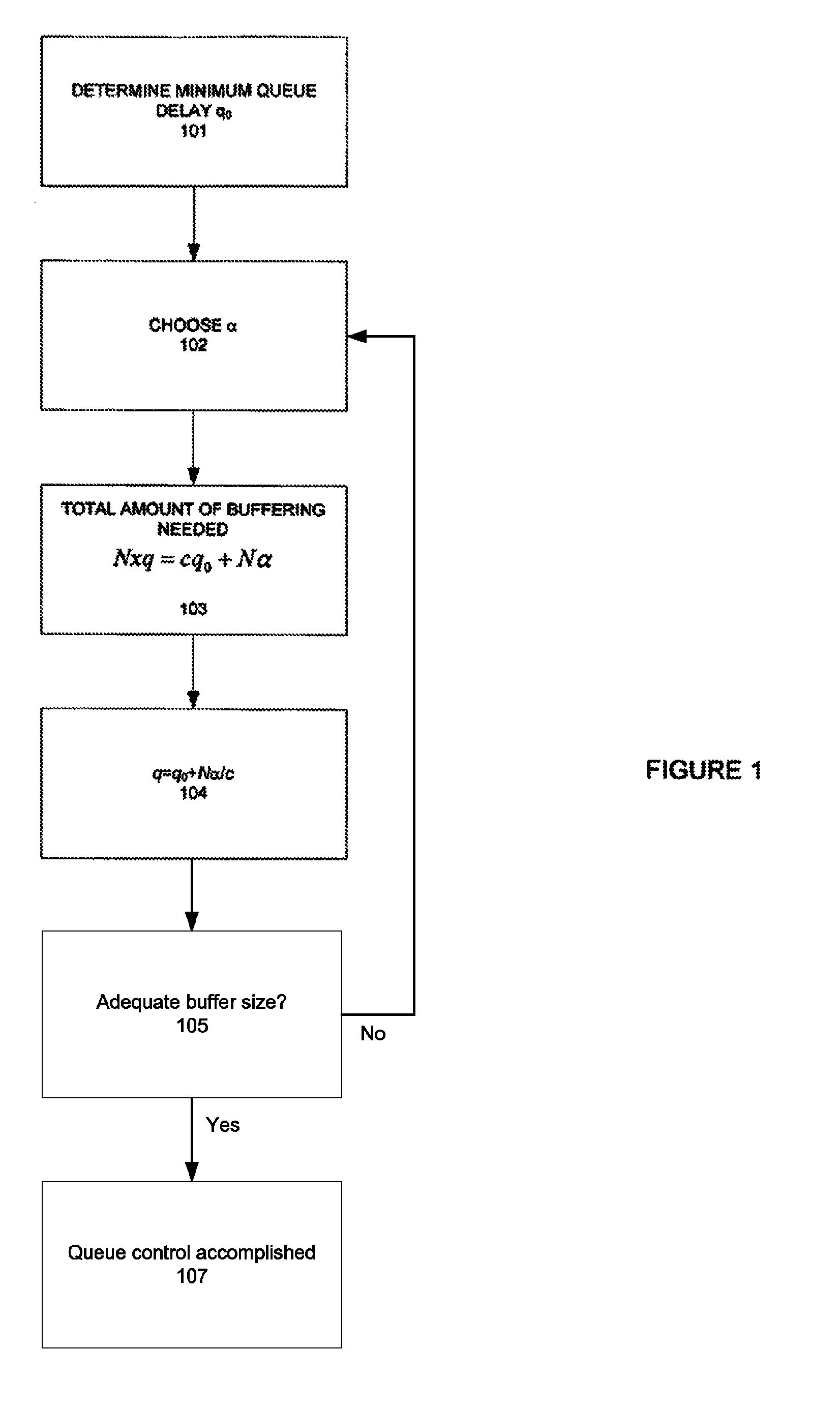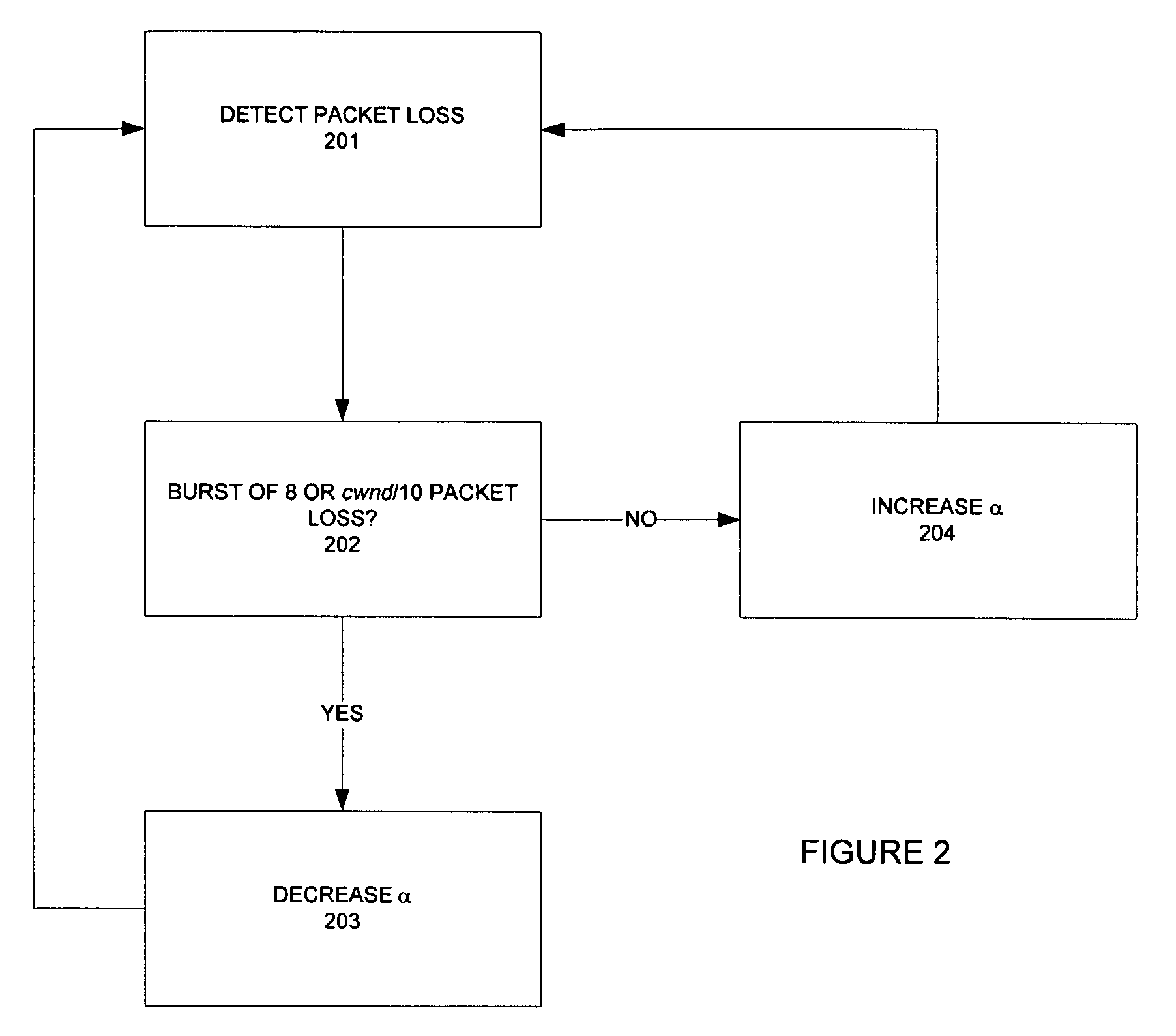Method and apparatus for network congestion control using queue control and one-way delay measurements
a network congestion and one-way delay technology, applied in the field of networks, can solve problems such as performance bottlenecks, network congestion, and large amount of message traffic, and achieve the effect of reducing network congestion
- Summary
- Abstract
- Description
- Claims
- Application Information
AI Technical Summary
Benefits of technology
Problems solved by technology
Method used
Image
Examples
Embodiment Construction
[0026]A method and apparatus for congestion control is described. In the following description, numerous details are set forth in order to provide a more thorough description of the present invention. It will be apparent, however, to one skilled in the art, that the present invention may be practiced without these specific details. In other instances, well known features have not been described in detail so as not to unnecessarily obscure the present invention.
[0027]The present invention is a delay based model and in fact uses queueing delay as a congestion measure, providing advantages over prior art loss based systems. One advantage is that queueing delay can be more accurately estimated than loss probability. This is because packet losses in networks with large bandwidth-delay product are rare events under TCP Reno and its variants (probability on the order 10-7 or smaller), and because loss samples provide coarser information than queueing delay samples. Indeed, measurements of ...
PUM
 Login to View More
Login to View More Abstract
Description
Claims
Application Information
 Login to View More
Login to View More - R&D
- Intellectual Property
- Life Sciences
- Materials
- Tech Scout
- Unparalleled Data Quality
- Higher Quality Content
- 60% Fewer Hallucinations
Browse by: Latest US Patents, China's latest patents, Technical Efficacy Thesaurus, Application Domain, Technology Topic, Popular Technical Reports.
© 2025 PatSnap. All rights reserved.Legal|Privacy policy|Modern Slavery Act Transparency Statement|Sitemap|About US| Contact US: help@patsnap.com



